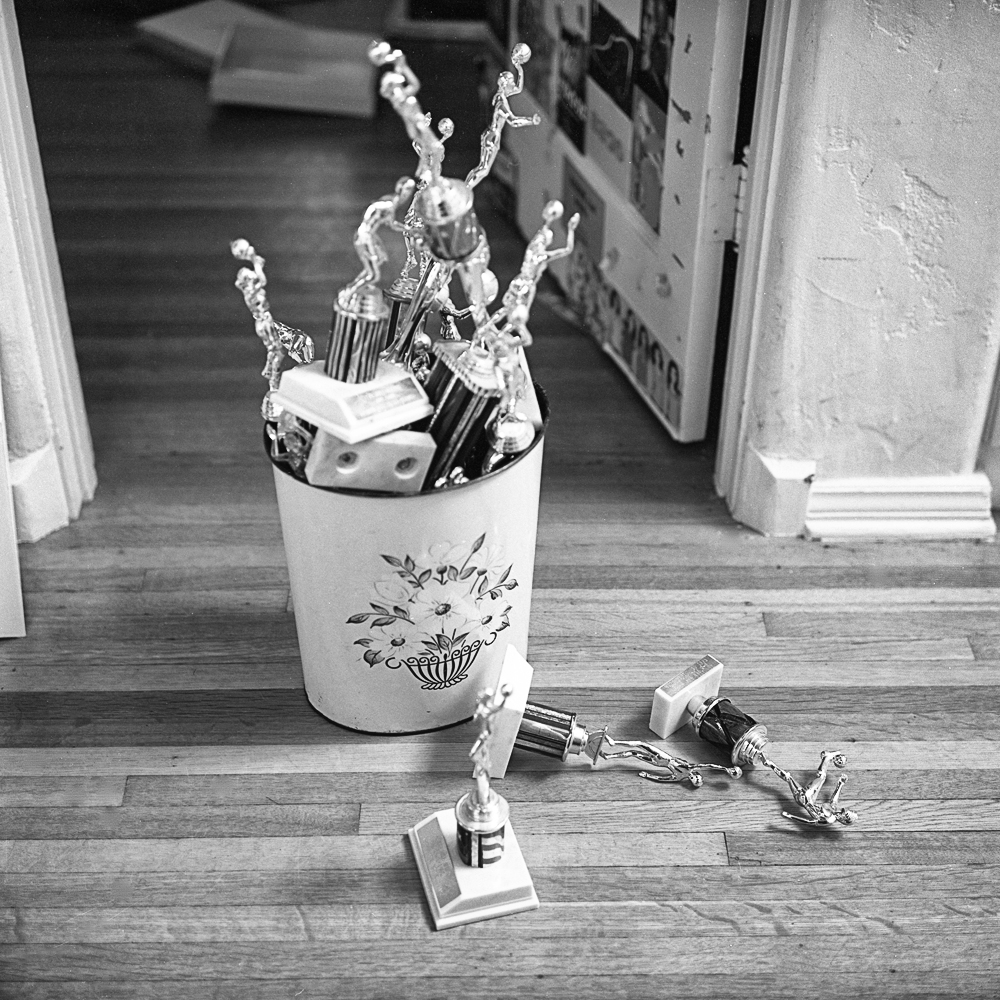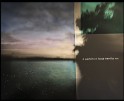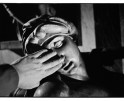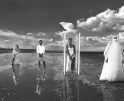2018 In the Rear View Mirror
I have to admit it, New Year’s Eve feels a bit like Ground Hog’s Day. How is it possible that 2019 begins tomorrow and that we are already 19 years into this century. Every time I unpack the Christmas decorations, I find my wacky 2000 glasses in the bottom of the box, a reminder that the clock is ticking. This night of New York ball dropping was always a marker for new goals, new hopes and dreams, and a determination to finally lose those ten pounds. But in reality, it is just like any other night (with more champagne) and all those good intentions can be started at any time.
Today instead of mulling over the past year, I wanted to share part of a commencement speech that artist Teresita Fernández gave some years ago at the Virginia Commonwealth University of the Arts, Richmond, Virginia. Teresita is an acclaimed sculptor and recipient of the Macarthur Fellowship. She was appointed to Barack Obama’s Commission of Fine Arts in 2011. Her words transcend her art and hopefully will provide you with some inspiration for 2019.
I also thought it was timely in our era of social media and the need to proclaim our successes publicly as a way to validate self. It’s a practice that I certainly participate in, but always feel a little uncomfortable about. I think it’s a good time to pull back from the platforms and quietly make our work, a good time to think deeply and profoundly and communicate more offline.
Excerpted from On Amnesia, Broken Pottery, and the Inside of a Form by Teresita Fernández:
In those moments when you feel discouraged or lost in the studio, or when you experience rejection, rest completely assured that what you don’t know about something is also a form of knowledge, though much harder to understand. In many ways, making art is like blindly trying to see the shape of what you don’t yet know. Whenever you catch a little a glimpse of that blind spot, of your ignorance, of your vulnerability, of that unknown, don’t be afraid or embarrassed to stare at it. Instead, try to relish in its profound mystery. Art is about taking the risk of engaging in something somewhat ridiculous and irrational simply because you need to get a closer look at it, you simply need to break it open to see what’s inside. I’ve always loved that line in Leonard Cohen’s song that says, “Forget your perfect offering. There is a crack in everything. That’s how the light gets in.”
We live in a meritocratic society, where accomplishments are constantly being measured externally, where forms are always read from the outside, where comfort and lifestyle are often mistaken for success, or even happiness. Don’t be fooled. Our ideas regarding success should be our own, and I urge you to pursue it simultaneously from both the inside and the outside. I agree completely with Georgia O’Keefe, who thought that “whether you succeed or not is irrelevant, there is no such thing. Making your unknown known is the important thing.”
As artists, it will be especially difficult to measure these ideas of what success may be because you have chosen a practice that is entirely dependent on being willing to possibly fail, over and over again regardless of any successes that do come your way.
Success is just another form, with both an inside and outside.
For the most part people are aware of what the outside of success looks like. This is often measured by how long your resume is, where you’ve shown your work, what gallery represents you, what kind of review your show got, how much someone pays for your work, and even what university you graduated from.
Outside success always seems to look terribly glamorous, and every once in a while it can be… But it still never means all that much, and it still never makes the work of the work any easier, if anything it makes it a little harder because the stakes get higher, the possible humble failures become less private and more visible and more cruelly judged.
The day after a successful opening or the completion of a body of work is something I have always likened to a hangover. There is a need to have a big greasy breakfast and get all of people’s celebratory compliments out of your bloodstream. A kind of panic sets in the very next day, an urge to get into the studio because you know you have to start all over again, building something from nothing, seeking the company of those trusted beneficial failures, waiting for those absurd internal dialogues with your own gang of voices. It’s not a very glamorous scenario. But this is precisely what internal success looks like. It is visible only to yourself and while you can trick the rest of the world into thinking you are a good artist, you can never really convince yourself, which is why you keep trying. If you’re lucky and motivated enough to keep making art, life is quiet, you get to work at what you love doing, happily chipping away at something, constructing something, adjusting to a cycle of highs and lows and in betweens, and it doesn’t matter if you’ve been doing it for two years or 50 years, the patterns remain exactly the same. The anxiety continues to set in, the doubts creep in, the baby steps towards mending fragments starts all over again, the cautious urge to peek between the cracks is there. When you find yourself in that place, that’s when you’ll know that the inside is driving the outside.
Both the inside and the outside aspects of success have one thing in common: they both happen only if you’re paying very close attention. Neither one happens casually. There is a kind of will, a hunger, a deep-seated ability to focus that successful people have. As Susan Sontag said, “Be clenched, be curious. Not waiting for inspiration’s shove or society’s kiss on your forehead. Pay attention. It’s all about paying attention.”
As you move away from the structures and comforts of a university setting, with built in responses and scheduled deadlines for completion of work and a captive audience of classmates and teachers indulging in your art in a controlled setting know that you will have to create an alternative support structure for yourself from now on. Those of you that are paying closest attention will do well, those of you who are listening attentively to your real needs will become sensitive and receptive to recognizing a good idea, those of you who are willing to engage in an intimate relationship with possible failure, and risk taking will go very, very far.
That hunger, that desire for success is nothing more than a fear of failure, just like when I had that decisive reaction in my graduate review. And the odd thing is that when you are actually succeeding, it tends to be quiet and comes always quite unannounced and without a lot of fanfare. You will, in fact, be the only person who ever really grasps or recognizes the internal successes. The work of the work is visible only to yourself.
The most rewarding triumphs always seems to dangle just on the either side of the potentially devastating, awkward catastrophes, the embarrassing clichés, the self conscious doubting. As though the biggest leap can only come as a relentless gamble. A self directed “you go first” attitude… a dare to oneself.
While you’ll have to figure it all out for yourselves, I also wanted to give all of you some practical information on a few things that have helped me along the way.
1. Art requires time, there’s a reason it’s called a studio practice. Contrary to popular belief moving to Bushwick, Brooklyn this summer does not make you an artist. If in order to do this you have to share a space with five roommates and wait on tables, you will probably not make much art. What worked for me was spending five years building a body of work in a city where it was cheapest for me to live, and that allowed me the precious time and space I needed after grad school.
2. Learn to write well and get into the habit of systematically applying for every grant you can find. If you don’t get it, keep applying. I lived from grant money for four years when I first graduated.
3. Nobody reads artist’s statements. Learn to tell an interesting story about your work that people can relate to on a personal level.
4. Not every project will survive. Purge regularly, destroying is intimately connected to creating. This will save you time.
5. Edit privately. As much as I believe in stumbling, I also think nobody else needs to watch you do it.
6. When people say your work is good do two things. First, don’t believe them. Second, ask them WHY? If they can convince you of why they think your work is good, accept the compliment. If they can’t convince you (and most people can’t) dismiss it as superficial and recognize that most bad consensus is made by people simply repeating that they “like” something.
7. Don’t ever feel like you have to give anything up in order to be an artist… I had babies and made art and traveled and still have a million things I’d like to do.
8. You don’t need a lot of friends or curators or patrons or a huge following, just a few that really believe in you.
9. Remind yourself to be gracious to everyone, whether they can help you or not. It will draw people to you over and over again and help build trust in professional relationships.
10. And lastly, when other things in life get tough, when you’re going through family troubles, when you’re heartbroken, when you’re frustrated with money problems, focus on your work. It has saved me through every single difficult thing I have ever had to do, like a scaffolding that goes far beyond any traditional notions of a career.
I would like to leave you with a quote from my dear friend Félix González-Torres, who was an extraordinary and generous artist.
“Above all else, it is about leaving a mark that I existed: I was here. I was hungry. I was defeated. I was happy. I was sad. I was in love. I was afraid. I was hopeful. I had an idea and I had a good purpose and that’s why I made works of art.”
If there is a single thing that you remember from what I’ve said today let it be that being an artist is not just about what happens when you are in the studio. The way you live, the people you choose to love and the way you love them, the way you vote, the words that come out of your mouth, the size of the world you make for yourselves, your ability to influence the things you believe in, your obsessions, your failures, ALL of these components will also become the raw material for the art you make.
So here’s a toast to 2019 and the potential of what is yet to come. Thought I’d leave you with a little positivity from Love Actually. – Aline
Posts on Lenscratch may not be reproduced without the permission of the Lenscratch staff and the photographer.
Recommended
-
2023 in the Rear View MirrorDecember 31st, 2023
-
The 2023 Lenscratch Staff Favorite ThingsDecember 30th, 2023
-
Inner Vision: Photography by Blind Artists: The Heart of Photography by Douglas McCullohDecember 17th, 2023
-
Black Women Photographers : Community At The CoreNovember 16th, 2023



















































